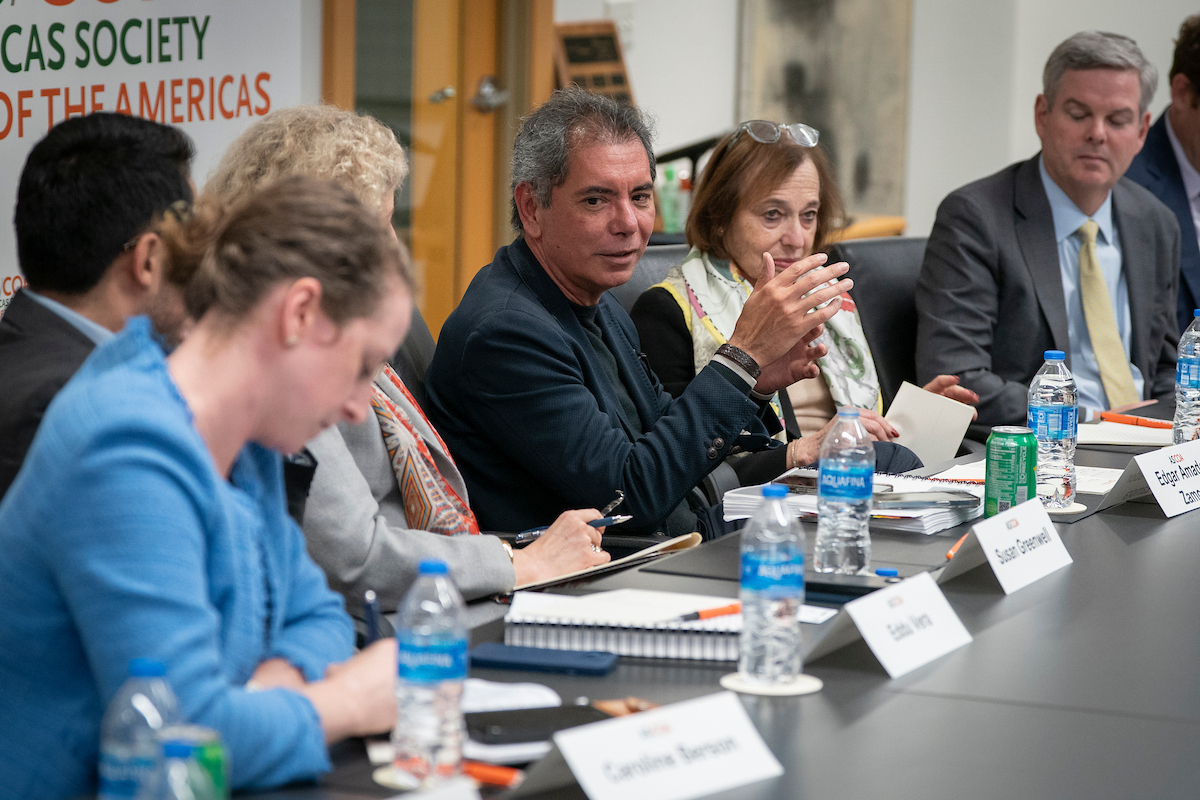Peru in the Global Economic Crisis
Peru in the Global Economic Crisis
Council of the Americas hosted former Peruvian Ambassador to the United States Eduardo Ferrero to discuss the Andean country's economic and political outlook in the context of the global financial downturn.
Speaker:
- Eduardo Ferrero, Former Peruvian Ambassador to the United States, Partner, Estudio Echecopar Law Firm, Dean, Universidad del Pacifico Law School.
Summary
Council of the Americas hosted Ambassador Eduardo Ferrero to discuss Peru in the context of the current economic downturn. The discussion focused on current President Alan Garcia’s efforts to reduce poverty and strengthen social welfare programs in the region while promoting free and open trade to reinforce Peru’s recent significant economic growth. Ferrero also discussed expectations for the presidential election in 2011.
Peru’s Economy
Despite the international downturn, Peru’s economy will continue to grow, Ferrero said, thanks to sound macroeconomic policies and export diversification. Since 2002, Peruvian exports have increased 75 percent, to $31 billion in 2008. While other Latin American countries have relied on traditional commodity exports, Peru has expanded to provide textiles, manufactured goods, and agribusiness. Peru recently boasted the highest growth rate in the hemisphere, said the ambassador, who pointed out that it achieved a significant growth rate of 9.8 percent in 2008. In spite of the global recession, economy is forecasted to reach a 3.8 percent rate of GDP growth while no other Latin American nation is expected to surpass 2 percent growth.
Peru finds itself in an exceptional position to emerge strongly from the global financial crisis, argued Ambassador Ferrero, due to the implementation of longterm macroeconomic policies. The Andean country has maintained an agenda that includes lowering trade barriers and upholding a strong legal framework, creating a healthy environment for foreign investment to increase by over 50 percent since 2002. Ferrero cited recent trade agreements with Thailand, Colombia, and Canada as evidence to the stability of their economy and favorable outlook for the future.
Strengthening Social Institutions
President Alan Garcia’s social policies have led to major strides in poverty reduction, said the ambassador. The poverty rate fell to 35 percent in 2008. Garcia’s focus on strengthening social welfare institutions and maintaining public spending has increased Peru’s capacity to assist largely rural, impoverished populations. However, rural marginalization remains a persistent problem that excludes many from equal access to education and other social programs. The global economic crisis has hindered President Garcia’s aim to lower the nation’s poverty rate to 30 percent by 2011 and prevented over 700,000 impoverished Peruvians from receiving aid this year alone.
Peru’s biggest challenge is education, said the ambassador, which needs improvement at all levels. The issue stands as an opportunity for the United States to build a partnership with Peru to collaborate on a university level to collectively address climate change and pursue green technologies. COA Vice President Eric Farnsworth referenced the Council’s report Building the Hemispheric Growth Agenda to promote economic growth in Peru through increased education and workforce development.
While the country has enjoyed low unemployement rates in the past, many Peruvians have lost work due to the economic downturn. However, Ferrero noted, 75 percent of those who have lost their jobs in the last six months have reentered the workforce in Peru’s informal sector.
Political Outlook
Peru faces a critical presidential election in 2011 that could signal a major political shift, said Ferrero. Candidates from all sides of the political spectrum are emerging to campaign on how the government should address and resolve the global economic downturn. Peruvian polling firm Apoyo Opinion y Mercado lists Luis Castañeda, Lima’s current mayor, as the present leader in the polls, followed closely by conservative candidate Lourdes Flores Nano and leftist Ollanta Humala. Garcia, of the center-left, is yet to endorse a candidate. Yet, the success of his economic policies in light of the global recession will play a role in election results.
Regional politics will also influence the results. Current candidate, Ollanta Humala, was harmed by his connection to Venuelan President Hugo Chávez in the 2006 presidential election and shares his belief nationalization, said Costa pointed. But he could possibly suffer in the polls in 2011 due to strained relations with Venezuela. Peruvian voters may feel that Keiko Fujimori, daughter of former President Alberto Fujimori, does not yet have the experience to serve as president. Based on the success of Garcia’s social, diplomatic, and economic policies, Ambassador Ferrero predicted that Peruvian voters will likely choose a candidate who is willing to continue on the same path.
Peru’s economic partnerships with countries around the world allow for strong diplomatic ties. While the United States is currently Peru’s biggest export and investment partner, China has also formed a valuable, bilateral relationship. The ambassador pointed out that Peru looks to connections with China and Europe to build constructive ties for future economic protection. Regional ties with neighbors Chile, Ecuador, and Brazil can help Peru emerge from the economic downturn, he argues. Despite a long history of discordant relations, China and Peru can achieve a mutually beneficial partnership by realizing they are politically on “two separate parallel paths,” but have similar economic interests, said the ambassador. Garcia’s ability to adapt allows Peru to be in a significantly better economic standing than other Latin American nations.








